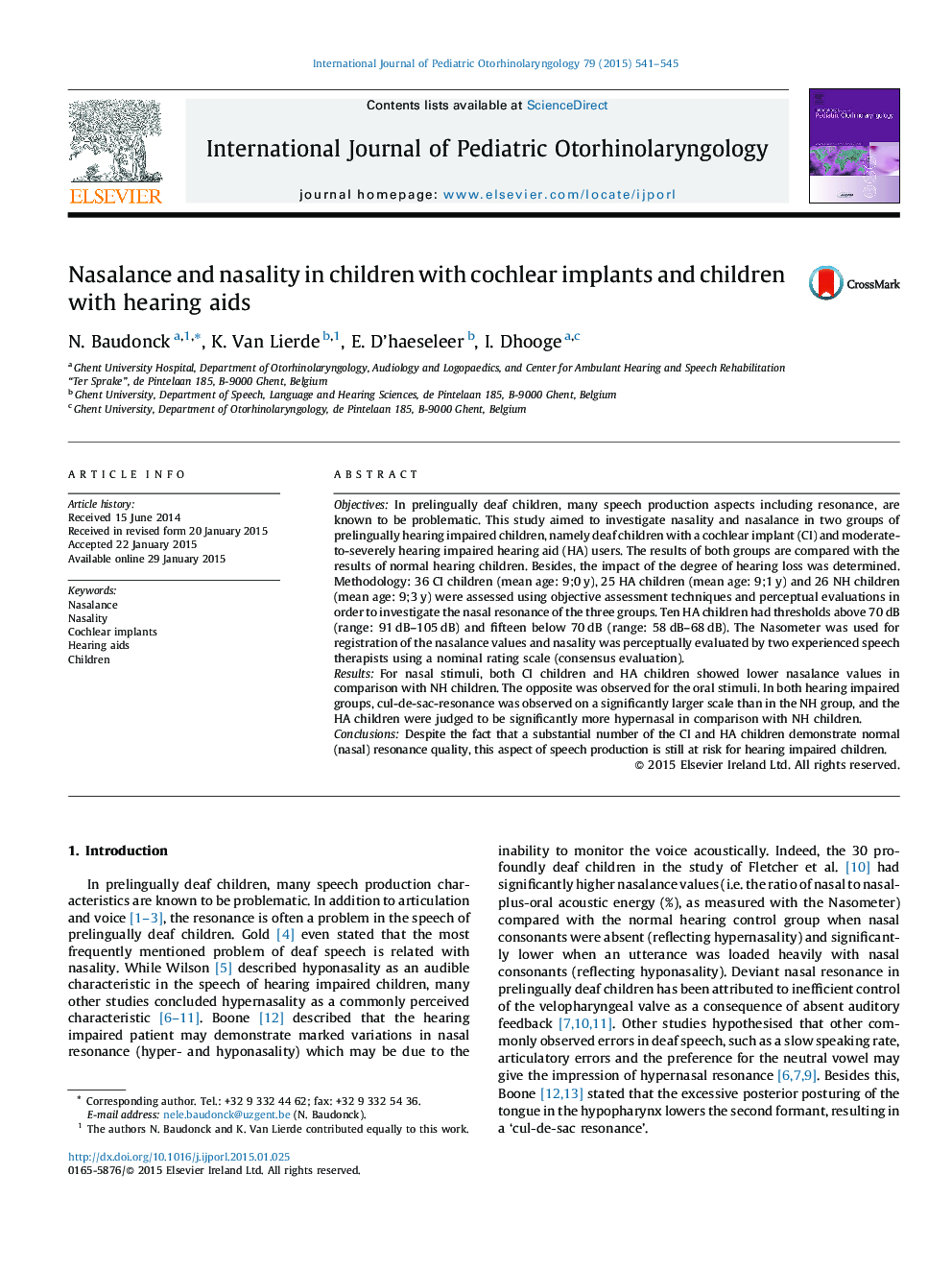| Article ID | Journal | Published Year | Pages | File Type |
|---|---|---|---|---|
| 4111707 | International Journal of Pediatric Otorhinolaryngology | 2015 | 5 Pages |
ObjectivesIn prelingually deaf children, many speech production aspects including resonance, are known to be problematic. This study aimed to investigate nasality and nasalance in two groups of prelingually hearing impaired children, namely deaf children with a cochlear implant (CI) and moderate-to-severely hearing impaired hearing aid (HA) users. The results of both groups are compared with the results of normal hearing children. Besides, the impact of the degree of hearing loss was determined. Methodology: 36 CI children (mean age: 9;0 y), 25 HA children (mean age: 9;1 y) and 26 NH children (mean age: 9;3 y) were assessed using objective assessment techniques and perceptual evaluations in order to investigate the nasal resonance of the three groups. Ten HA children had thresholds above 70 dB (range: 91 dB–105 dB) and fifteen below 70 dB (range: 58 dB–68 dB). The Nasometer was used for registration of the nasalance values and nasality was perceptually evaluated by two experienced speech therapists using a nominal rating scale (consensus evaluation).ResultsFor nasal stimuli, both CI children and HA children showed lower nasalance values in comparison with NH children. The opposite was observed for the oral stimuli. In both hearing impaired groups, cul-de-sac-resonance was observed on a significantly larger scale than in the NH group, and the HA children were judged to be significantly more hypernasal in comparison with NH children.ConclusionsDespite the fact that a substantial number of the CI and HA children demonstrate normal (nasal) resonance quality, this aspect of speech production is still at risk for hearing impaired children.
